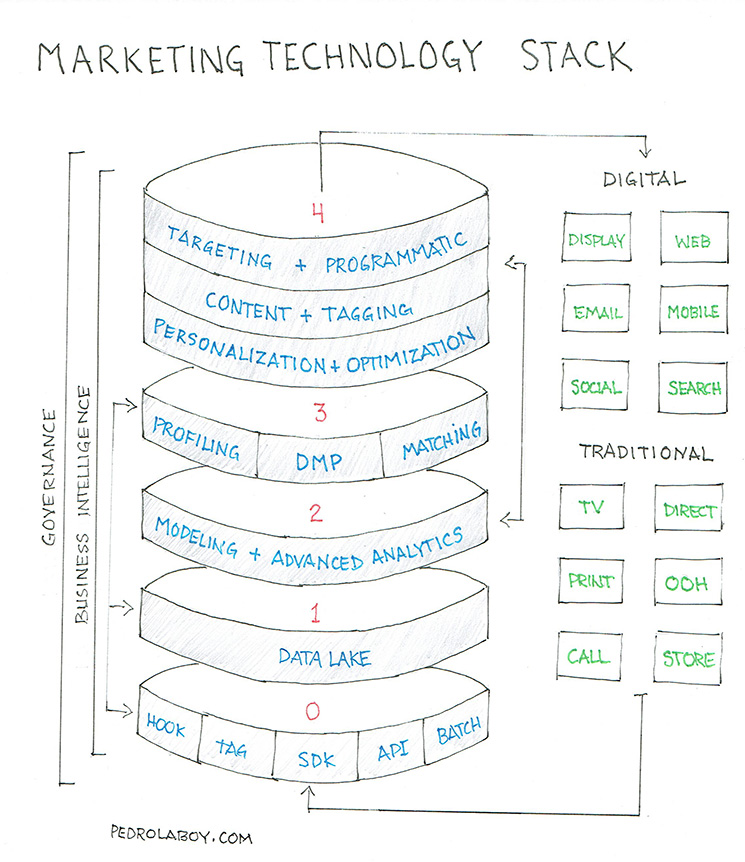- DATA – The Data Infrastructure employs a data lake to ensure scalability, speed, and flexibility. Data integration covers all techniques to connect all varieties of structured, semi-structured, and unstructured data.
- MODELING – The Modeling layer is the environment to facilitate advanced models and analytics. These include: Marketing Mix Models, Machine learning, AI, Deep Learning, Segmentation, LTV, Attribution modeling, and many more. The key to this layer is to have the analytics environment and tools needed to generate these models (e.g. Python and R).
- PROFILING – The profiling layer is the part of the stack in which we attribute data, metrics and measurable behaviors to build segments and individual profiles (in instances where we collect this data). We can also use our data for matching or adding profiles from 3rd party vendors.
- PERSONALIZATION – This Personalization layer is the part of the stack which leverages models and data to deliver content and experiences based on behavior and preference. We use the audience information from our DMP and profile creation to store preferences and deliver against those as well.




